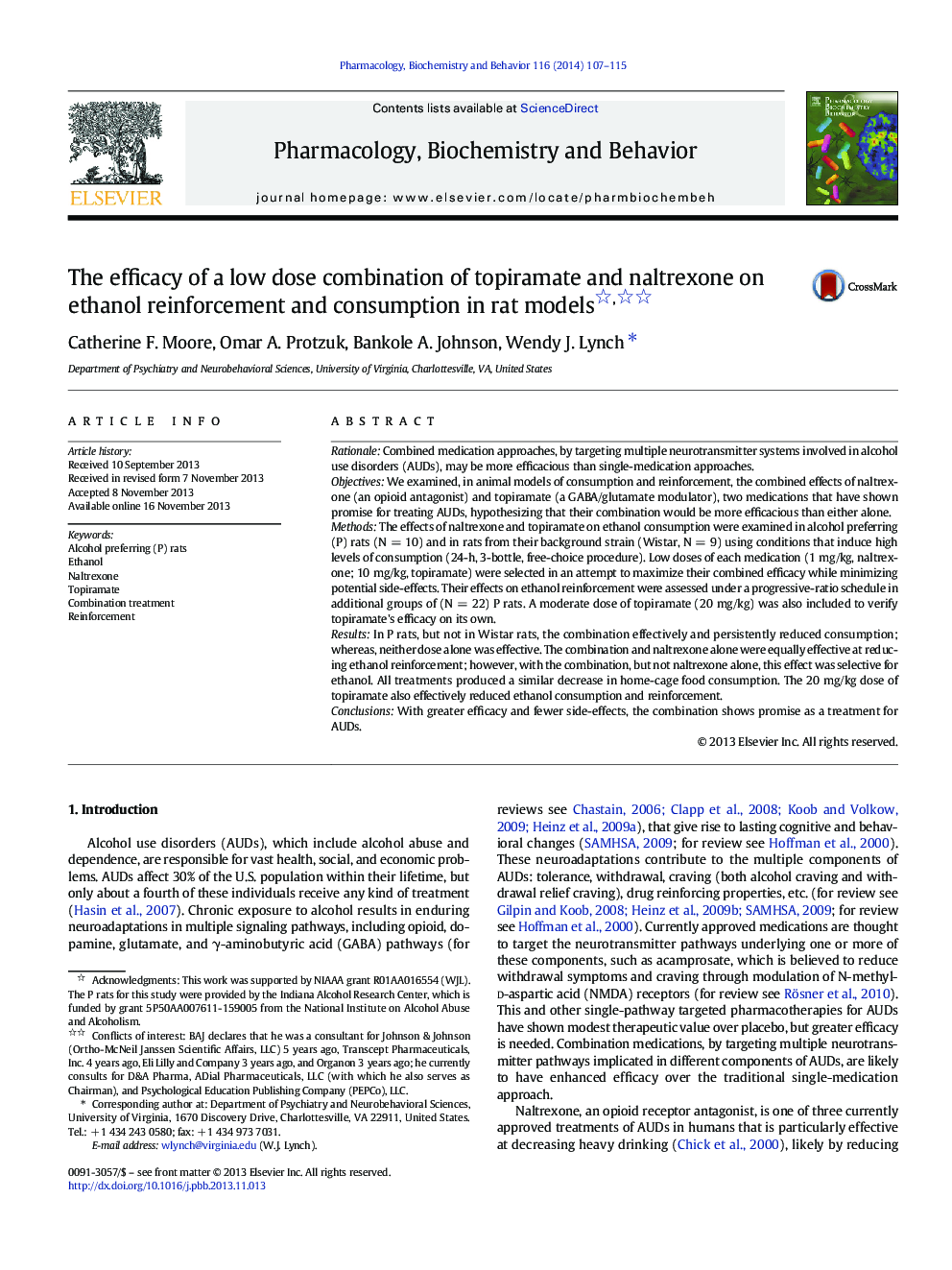| Article ID | Journal | Published Year | Pages | File Type |
|---|---|---|---|---|
| 2013013 | Pharmacology Biochemistry and Behavior | 2014 | 9 Pages |
•Combination medications show potential in treatment of alcohol use disorders (AUDs).•Naltrexone and topiramate have each shown promise for treating AUDs on their own.•We tested a lose-dose combination of these medications on ethanol self-administration.•We found this combination to be more effective and/or selective than either alone.•The topiramate–naltrexone combination shows promise as a potential treatment for AUDs.
RationaleCombined medication approaches, by targeting multiple neurotransmitter systems involved in alcohol use disorders (AUDs), may be more efficacious than single-medication approaches.ObjectivesWe examined, in animal models of consumption and reinforcement, the combined effects of naltrexone (an opioid antagonist) and topiramate (a GABA/glutamate modulator), two medications that have shown promise for treating AUDs, hypothesizing that their combination would be more efficacious than either alone.MethodsThe effects of naltrexone and topiramate on ethanol consumption were examined in alcohol preferring (P) rats (N = 10) and in rats from their background strain (Wistar, N = 9) using conditions that induce high levels of consumption (24-h, 3-bottle, free-choice procedure). Low doses of each medication (1 mg/kg, naltrexone; 10 mg/kg, topiramate) were selected in an attempt to maximize their combined efficacy while minimizing potential side-effects. Their effects on ethanol reinforcement were assessed under a progressive-ratio schedule in additional groups of (N = 22) P rats. A moderate dose of topiramate (20 mg/kg) was also included to verify topiramate's efficacy on its own.ResultsIn P rats, but not in Wistar rats, the combination effectively and persistently reduced consumption; whereas, neither dose alone was effective. The combination and naltrexone alone were equally effective at reducing ethanol reinforcement; however, with the combination, but not naltrexone alone, this effect was selective for ethanol. All treatments produced a similar decrease in home-cage food consumption. The 20 mg/kg dose of topiramate also effectively reduced ethanol consumption and reinforcement.ConclusionsWith greater efficacy and fewer side-effects, the combination shows promise as a treatment for AUDs.
